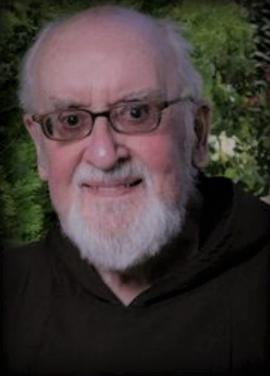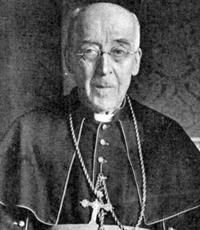MacRory, Camillus, 1925-2011, Capuchin priest
- IE CA DB/CMR
- Persoon
- 26 May 1925-25 December 2011
James MacRory was born in Belfast on 26 May 1925, the son of John MacRory and Anne Margaret MacRory. He was received as a Capuchin Franciscan novice in Rochestown Friary in County Cork in October 1943. He took Camillius as his religious name upon joining the Order. He made his solemn profession in 1947 in Ard Mhuire Friary in County Donegal where he was also ordained to the priesthood on 25 May 1951. Following his ordination, Fr. Camillus was assigned to teach at Rochestown College, from August 1951 to October 1952. He was then sent to California where he worked as an Associate Pastor at Our Lady of Angels in Burlingame from 1952 to 1960. For the next eighteen years Camillus ministered as an Associate Pastor at St. Joseph’s Parish (Roseburg, Oregon), as Pastor at St. Aloysius (Point Arena, California), and Old Mission Santa Inés (Solvang, California), and at St. Francis of Assisi (Los Angeles, California). After his return from Oxford in England where he participated in special studies from 1978-80, he once again served as an Associate Pastor at Our Lady of Angels in Burlingame. After that last assignment he became Director of On-going Education for the Western America Capuchin Province, a member of the Peace, Justice and Ecology Committee, and the National Spiritual Assistant for the Secular Franciscan Organisation (SFO). He was also spiritual assistant to the Secular Franciscans at Our Lady of Angels Parish in Burlingame, California. He also served as a priest at Mater Dolorosa Parish in San Francisco. He died on 25 December 2011 at Mercy Care and Retirement Centre in Oakland, California, after suffering from respiratory complications. He was buried in the cemetery adjoining San Lorenzo Friary, Santa Inés, California.
Baptismal name: James MacRory
Religious name: Fr. Camillus MacRory OFM Cap.
Date of birth: 26 May 1925
Place of birth: Belfast, County Antrim (Diocese of Down & Connor)
Name of father: John MacRory
Name of mother: Anne Margaret MacRory (née Farnan)
Date of reception into the Capuchin Order: 26 Oct. 1943
Date of first profession: 29 Oct. 1944
Date of final profession: 29 Oct. 1947
Date of ordination (as priest): 24 May 1951
Educational attainments: BSc (1947)
Missionary activities: Travelled to the Western United States mission custody in 1952
Date of death: 25 Dec. 2011
Place of death: Mercy Care and Retirement Centre, Oakland, California
Place of burial: Cemetery, San Lorenzo Seminary, Santa Inés, California









